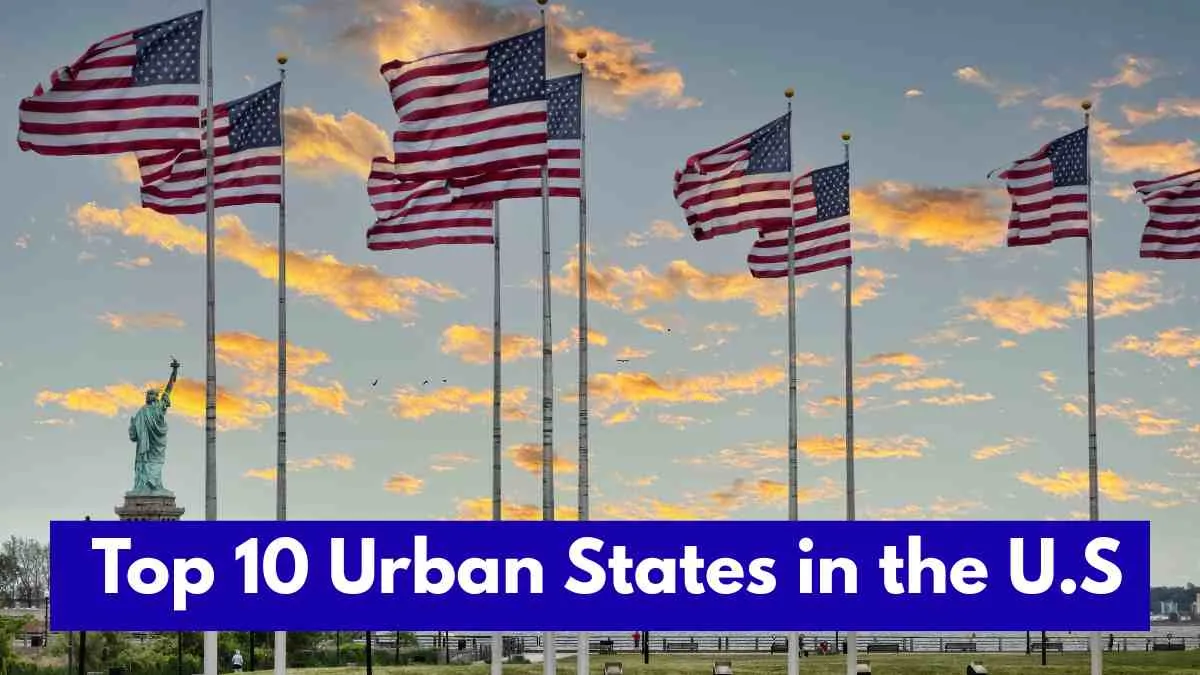Urbanization in the United States has been slow but is a consistent transformation over the last two centuries. From a nation where just 5% of the population lived in cities in 1790, now has 80% of urban population. This shift is driven by the Industrial Revolution and post-war economic booms, has reshaped the country’s demographics. But do you also wonder which states lead this urban trend? So, let’s see.
Check out: Which is the Largest Lake in the USA and How Big It is? Check Here
List of the Top 10 Urban States
Based on the latest data from the World Population Review, here are the Top 10 Urban States in the U.S., along with the answers to why and how these states became urban powerhouses.
| State | Urban Population | Urbanization Percentage | Key Factors for Urbanization |
| California | 37.2 | Not specified in excerpt | Booming tech, entertainment, and service sectors; infrastructure and coastline cities |
| Florida | 19.7 | Over 91% | Tourism, retirement communities, international migration |
| New Jersey | 8.7 | 93.8% | Proximity to New York City; major cities like Newark and Jersey City |
| Texas | 24.4 | 83.7% | Economic engines of technology, healthcare, and energy; lower taxes and business incentives |
| New York | 17.6 | 87.4% | New York City as a global financial and cultural hub; early urbanization |
| Illinois | 11.1 | 86.9% | Chicago and its suburbs; historical role in transportation, manufacturing, and finance |
| Pennsylvania | 9.9 | 76.5% | Historic industrial roots; modern urban revitalization; Philadelphia and Pittsburgh as anchors |
| Ohio | 9 | 76.3% | Cities attracting young professionals and tech startups |
| Georgia | 7.9 | 74.1% | Post-war industrialization, logistics expansion, cultural hub in the Southern U.S. |
| Michigan | 7.4 | 73.5% | Auto industry, urban renewal in cities like Detroit, college towns and suburban growth |
Why Is California the Most Urbanized State?
California tops the list with 37.2 million people living in urban areas. Cities like Los Angeles, San Diego, and San Francisco have long attracted migrants due to booming tech, entertainment, and service sectors. Its infrastructure and coastline cities have made it a magnet for both global talent and domestic migration.
What About the Least Urban States?
Interestingly, Maine (39%) and Vermont (35.1%) remain exceptions to this trend. These states have consistently maintained rural majorities and have resisted the urban migration patterns seen elsewhere in the country.
Check out: What is US Social Security and its Benefits?
Conclusion: What Does the Future Hold for Urban America?
The U.S. urbanization trend shows no signs of slowing. As technology, migration, and economic shifts continue, urban areas will remain the heartbeat of American life. This above-mentioned list of top 10 urban states offers an insight into where development is thriving and where future growth will likely concentrate.

Comments
All Comments (0)
Join the conversation